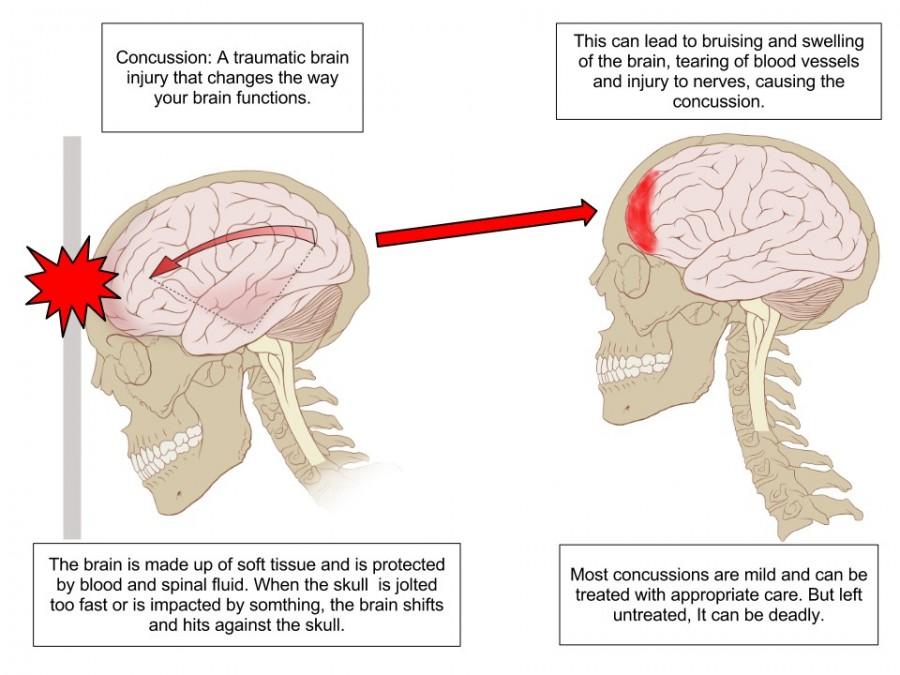Head injuries raise awareness about concussion protocol
March 23, 2015
The running back explodes down the sideline with a burst of speed. His sight is focused on the end zone. CRACK. The running back collides with the linebacker. The running back is one of three million people who report a concussion annually in the nation. March is brain injury awareness month, so how does CHS protect and accommodate students with concussions?
CHS complies with the Maryland State Department of Education (MSDE) policy COMAR 13A.06.08, which lays out guidelines and protocols that students and athletes must follow when they have a head injury. Since the policy went into effect June 2013, coaches and teachers have more knowledge on the subject of concussions than ever before.
“It is a lot better in terms of identifying head injuries, treating them and protecting athletes,” athletic director Scott Rivinius said. “These protocols are dictated by the state and have made a positive difference in athlete health.”
The MSDE bill requires coaches and physical education teachers to complete concussion training, athletes to complete a concussion return to play protocol and the school system to ensure appropriate academic accommodations to students with concussions.
According to school nurse Deborah Stapleton, appropriate academic accommodations are symptom based. For example, if a student who has a concussion has headaches in school, then he or she should be allowed rest breaks, or if a student’s processing speed is not as fast as normal do to a concussion, then he or she should be allowed extended time on assignments.
“A positive attribute is that accommodations are implemented to students who have concussions,” Stapleton said. “I am the contact point with all the medical information that comes into the building. I am the person that directs information recommended from the doctor to the athletic director, the administrator, the counselor and the teachers.”
According to Rivinius, if a student receives a head injury in a practice or game, he or she is removed from the playing field and told to see a medical professional to evaluate his or her condition. A licensed health care provider must then fill out the Medical Clearance form found on the MCPS website, which diagnoses and clears the student of a concussion after reevaluation. Once cleared by a doctor, the student must complete the return to play protocol which takes a minimum of six days to complete and eases the athlete into activity and participation at practice.
“Concussion awareness is much better than it was even a decade ago,” Rivinius said. “The awareness is at all levels of sports from youth to the professional level. I think we have a much better understanding of head injuries and will continue to try to be the best we can to help prevent and treat head injuries.”
According to Stapleton, the consequences of concussions are serious. It takes longer to recover after the first concussion and there are additive effects of multiple concussions that can cause long term brain injury such as seizures and even death.
“The protocol makes sure that you are cleared and that your concussion is healed before you go back to play because if you go back in the game with a concussion, it can kill you,” Stapleton said.
Junior Madison Farrand plays hockey outside of school and is one student who has dealt with the concussion protocol. She feels it is important to communicate with the school when a concussion takes place.
“Getting a concussion has made me realize that you need to be smart about sports and injuries and take time away from the sport in order to recover,” Farrand said.


